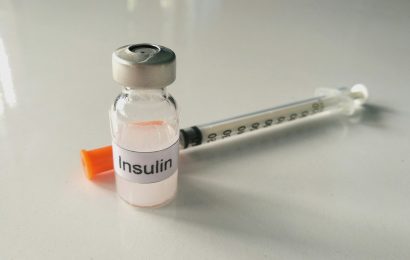Most people with diabetes need health insurance, but having diabetes creates insurance problems. How can you get insurance that works for you?
Why people with diabetes need health insurance
According to a study in the journal Diabetes Care, “People with diagnosed diabetes, on average, have medical expenditures approximately 2.3 times higher than they would have without diabetes.” In 2012, these expenses averaged $13,700 dollars per person per year. Major costs include:
• Medications. The newer and more high-tech your prescription drugs, the more they will cost. Sulfonylureas and metformin are almost free, while GLP-1 agonists, DPP-4 inhibitors, and SGLT-2 inhibitors would be out of most people’s price range without insurance.
• Medical visits. Besides seeing your general practitioner and maybe an endocrinologist, you are supposed to see an eye doctor once a year, a podiatrist, and if complications threaten, maybe a cardiologist and a nephrologist. Specialists cost a lot. You might also see a diabetes educator, dietitian, or counselor.
• Diabetes equipment: Meters, test strips, lancets, and possibly a continuous glucose monitor (CGM), to start with. Syringes or a pump if you use insulin. Glucose tabs. Special shoes or inserts. And so on.
• Care of complications can cost a lot, and are mostly not counted in the “cost of diabetes care” figures quoted above. Unless you’re rich, you will need some kind of medical insurance to cover diabetes care costs. Unfortunately, insurance may be difficult to get.
Diabetes costs
Not long ago, people with diabetes could be excluded from health insurance because of a pre-existing condition. The Affordable Care Act (“Obamacare”) made that discrimination illegal, but that doesn’t make it easy to find insurance.
According to CNBC, most Americans are covered through their jobs. In 2016, 155 million people under age 65 were covered by work-based plans.
About 130 million were covered by Medicare, which covers seniors and people on disability, and Medicaid, which mostly covers low-income people and children. About 11 million people bought their own through the Obamacare exchanges. Many of those people were helped by subsidies, but insurance can still be far too expensive.
By law, a company that employs 50 or more people has to provide insurance. However, many companies get around that by using part-time workers, who they don’t have to cover. Companies who do cover part-timers were rare enough to be called “awesome” in this article listing seven of them.
Smaller companies don’t have to provide health insurance, and most employers who do provide it these days make you pay a chunk of your premiums.
If your employer doesn’t offer insurance, or if you’re unemployed or underemployed, you may be able to buy insurance through the exchanges. Enrollment period is November 1 to December 15 this year, so if you’re thinking about changing, now is the time to start looking.
Some states provide much more help in buying insurance than others. In California, where I live, low-income people can get almost their entire policy paid for. Some other states are less generous. You can find out online what the subsidies are where you live.
Choosing the best plan for you
What to consider in choosing a medical plan? You want to compare how much each one costs, how much the deductibles and co-pays will be, and most importantly, what each one covers. Plans that cost less typically have higher deductibles and co-pays.
Usually, people with diabetes need a lot of regular care, and lower-cost, high-deductible plans can lead to more overall spending and less care. But your case may be different. You may have to crunch some numbers to figure it out.
High deductibles or co-pays may lead you to cut back on glucose checking supplies, or to skip medications, lab tests, or appointments to save money. This isn’t good, but there are healthier ways to reduce medical costs. If you’re willing to stick with generic drugs, use low-cost supplies from places like Walmart or Costco, get more care at a community health center or from medical school students, a high-deductible plan might work for you. You might get by with a high-deductible plan if your self-management goes well: more exercise, healthier eating, and stress reduction might reduce your costs.
Are your needs covered by this insurance?
How do you know which insurance plan will best cover your expenses? Health insurers must have a summary of benefits and coverage (SBC). An employer offering a plan has to give you the SBC, listing what is covered, deductibles, co-pays, and out-of-pocket maximums. You can also request an SBC from the provider at any time.
SBCs do not tell what specific products — drugs, equipment, appointments, and so on — are covered. Insurers usually have a helpline, which can tell you what is covered and what isn’t. They also have prescription drug formularies, which list all the drugs they cover. You may not be able to get a formulary if you’re not yet a member, but many formularies are available online. Here’s a typical one from Aetna Medicare.
Coordinate your care with your insurance. Doctors typically don’t know what their patients’ insurance covers. You have to tell them. It doesn’t help you if a doctor orders meds you can’t afford. Find out how much specialist appointments might cost you and work with your provider to get services that are better covered by your plan.
I’m glad I’m old enough for Medicare and don’t have to worry so much about this anymore. We so need Medicare for All in this country. You can lobby for that by calling or e-mailing your senators and congressional representatives and telling them to support Medicare for All bills, which have been introduced in both houses.
Want to learn more about diabetes and money matters? Read “Do’s and Don’t’s for Saving Money With Diabetes” and “Healthy Eating on a Budget.”





